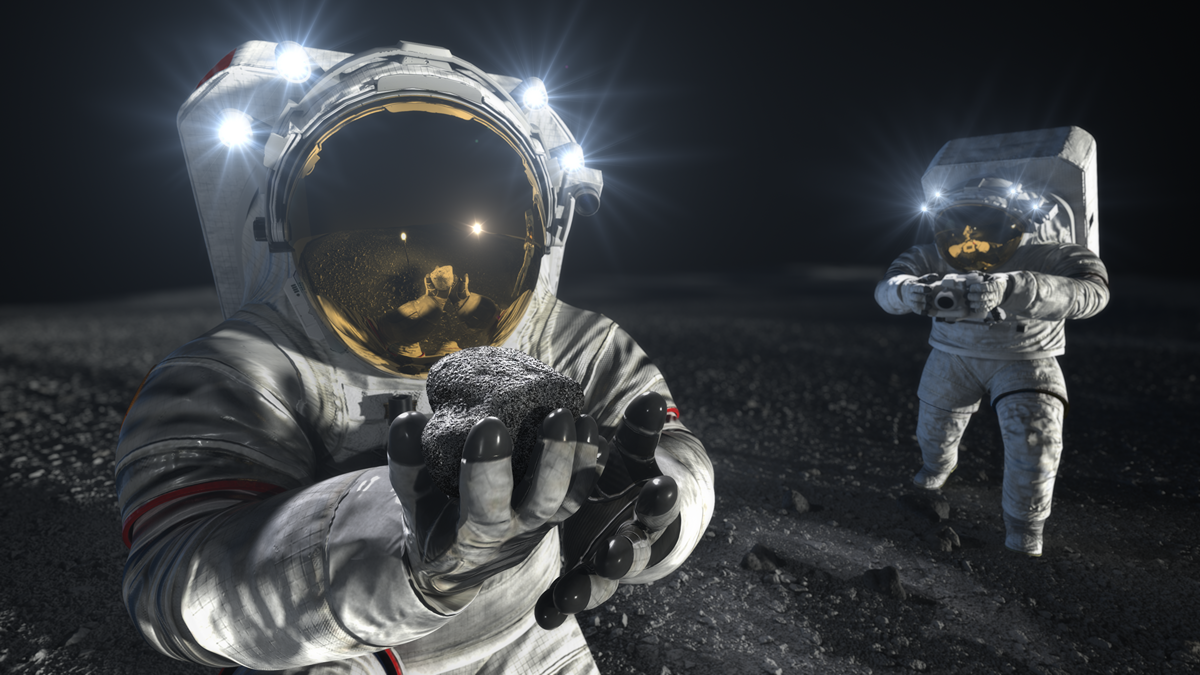Handheld laser device can quickly diagnose astronaut health in space
Medical sample collection in low Earth orbit could be repurposed for future moon and Mars missions.

Lasers in space will speed up transmission of medical sample results faster than ever, scientists say.
International Space Station astronauts are trying to find efficiencies in medical diagnoses to make better operational decisions in remote environments, especially as NASA reaches for the moon under the Artemis program and eventually, send astronauts to Mars.
The lasers are just one part of the package that will, researchers say, benefit astronaut health even while spaceflyers are in low Earth orbit. The device, somewhat akin to a "Star Trek" tricorder, is called Reusable Handheld Electrolyte and Laboratory Technology for Humans (rHEALTH) ONE biomedical analyzer.
"Astronauts could use rHEALTH to perform a full self-diagnosis without technical training,” said Eugene Chan, inventor of the unit, in a NASA statement posted Sept. 7. "They only need a drop of blood, saliva, or urine to put into the reader and within minutes they have the results of a range of crucial health indicators."
Related: Tricorders in space: Not just a 'Star Trek' dream any more
The technology is early-stage and its efficacy is not yet known. That said, European Space Agency astronaut Samantha Cristoforetti tested the device over two days during Expedition 67, which is ongoing on the ISS, and the research team will examine the results to see where to go next.
The devices are designed to record of a variety of common medical conditions that may affect astronauts while they're on a mission, such as blood clots (which have happened on the ISS before), radiation exposure, and kidney stones. Moreover, the device is highly portable, which makes a huge difference when you're trying to cut down on the amount of mass being launched to a far-off planet.
Get the Space.com Newsletter
Breaking space news, the latest updates on rocket launches, skywatching events and more!
Collecting the samples requires two steps: a sensor that is stuck to the chest, which can send real-time information to doctors on Earth. Meanwhile, a sample only requires a drop of blood or saliva, which is placed onto a nanostrip for the device to analyze.
"Once inside the rHEALTH reader, microfluidic technology performs dilution, mixing, and complete sample prep," NASA stated. "The sample is then exposed to two lasers that read and analyze it, collecting over 100 million raw data points for particles the size of cells."
Related: Here's what emergency medicine will look like for astronauts in space

NASA says the two-step technology is so far unique in orbit, and may allow astronauts and the doctors that care for them to get medical information faster. That would also allow for swifter discussions concerning medical treatment.
Since the experiment uses liquid in microgravity, to stop artificial separation or other issues, external connections were modified to keep water in and air bubbles out.
"The rHEALTH unit pushes water with air pressure to flow a sample through the device," NASA stated. "Engineers had to design a container that could be squeezed easily and made an assembly with soft medical balloons that looks just like a pair of lungs."
The Artemis missions aim to put astronauts on the moon in 2025 or 2026, providing that earlier flights go to plan. The first mission, an uncrewed effort called Artemis 1, is scheduled to launch Sept. 23 on a round-the-moon mission to test out the Space Launch System rocket and Orion spacecraft ahead of flying astronauts.
Follow Elizabeth Howell on Twitter @howellspace. Follow us on Twitter @Spacedotcom and on Facebook.
Join our Space Forums to keep talking space on the latest missions, night sky and more! And if you have a news tip, correction or comment, let us know at: community@space.com.

Elizabeth Howell (she/her), Ph.D., was a staff writer in the spaceflight channel between 2022 and 2024 specializing in Canadian space news. She was contributing writer for Space.com for 10 years from 2012 to 2024. Elizabeth's reporting includes multiple exclusives with the White House, leading world coverage about a lost-and-found space tomato on the International Space Station, witnessing five human spaceflight launches on two continents, flying parabolic, working inside a spacesuit, and participating in a simulated Mars mission. Her latest book, "Why Am I Taller?" (ECW Press, 2022) is co-written with astronaut Dave Williams.









